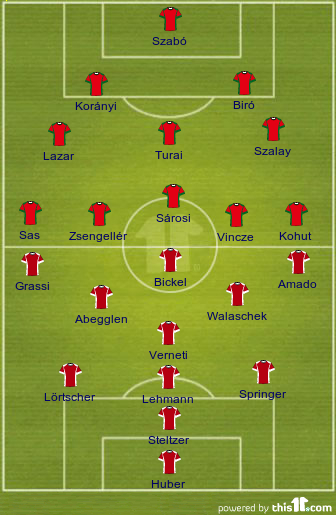The Verrou
With the rest of Europe making clear tactical progress, it fell to the Swiss to find a way to combat the WM and the Danubian school. The Swiss players were not generally as gifted as their European counterparts, or as physically fit as the British, and so they needed tactics to overcome the superiority of their opponents. The system the Swiss designed was aimed to get the very best out of more limited players.
The man that came up with the plan, Karl Rappan, was not actually Swiss himself but Austrian. He had enjoyed success as a player with Rapid Vienna, and had been capped for the Austrian national team but he moved to Servette in Switzerland
The bolt retained the use of an attacking centre-half which had been the cornerstone of the pyramid and also lined up the two full-backs one behind the other as had often taken place under the classical 2-3-5 formation. The greatest innovation though was to withdraw the two wing-halves into a deeper role, responsible for marking the opposing wingers. Although wing-halves had been charged with this role under the 2-3-5, less emphasis was placed on their attacking duties under the Verrou. By lining up the full-backs one behind the other, it allowed one to go to the ball and challenge, while the other acted as a spare man, sweeping up behind him.
This was in effect the first use of the verrouller or libero in football, a position that would continue to evolve in the coming years. Rappan enjoyed a great deal of success with the system as he won two league titles with Servette, and five more with Grasshoppers. It was in international football that it would have it’s greatest impact. Using the Verrou the Swiss defeated England in a friendly and knocked Germany
 |
| Switzerland (below) v. Hungary, 1938 |
The great difficulty of the system, particularly when played by a more ambitious side than Switzerland
The Swiss may have invented the Verrou, but it was Uruguay Brazil had crushed all opposition in the build up to their deciding World Cup match against the Uruguayans, with one notable exception: Switzerland Brazil Uruguay defeated Brazil

No comments:
Post a Comment